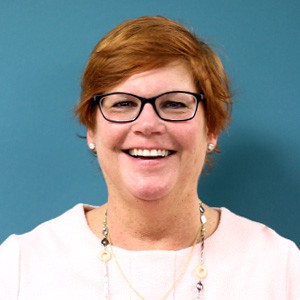Growth, Expansion, and Results
We published a blog in December 2021 titled “Course Sharing in Year One,” spotlighting four institutions that started course sharing in 2021. This post is a continuation of the series, focused on the impacts to student progress and academic innovation that institutions are seeing in their second year of course sharing. Enjoy!
__
The buzzword for many of the institutions in their second year of course sharing is expansion. By year two, institutions have moved from onboarding and initial exploration of the value of course sharing to strategic integration of course sharing, with the help of Acadeum’s institutional success team. For a very recent example, just days ago at a panel discussion for ABHE’s 75th Annual Conference, Johnson University discussed plans to add and expand online programs through course sharing (creating a Bachelor of Fine Arts in Visual Production and Design in Fall 2022), while Southeastern University outlined a host of online courses in new disciplines that they planned to offer on the Acadeum network.
Year two of course sharing looks a bit different for each institution, but in our conversations with colleges and universities at this stage, we found a few commonalities–for many, year two means:
- A more structured approach to helping students in need (e.g. pulling reports to find popular, off-sequence courses, and more systematic tracking of students who are falling behind).
- Testing new course sharing strategies and aligning those strategies to institutional goals to drive academic innovation and revenue generation.
- Measurable, year-on-year increases in students enrolled in online courses through Acadeum, resulting in net new or stacked revenue growth.
Let’s look more closely at a few institutions in the Acadeum network to see what schools can achieve and experience in year two of course sharing.
Stories from the Acadeum Network
Bethlehem, PA | 2,100 FTE
Joined Acadeum: Fall 2020 (Home Institution)
YoY Growth in Acadeum Courses Since 2020: +87%
Early Goals: Carol Traupman-Carr, Provost and Dean of Faculty at Moravian, described the initial approach to course sharing as “an option to fill gaps, not part of a larger strategy.” Course sharing helped address “one-off cases,” for traditional undergraduate students looking for a course that wasn’t available when they needed it, particularly when they needed to stay on track for spring graduation. Student advisors recommended online courses through Acadeum when students were in a bind: Moravian went from helping a handful of their students in early 2021, to 75+ by January 2022.
Program Expansion: An Opportunity to Increase Impact: One of Moravian’s critical institutional goals is to improve adult learner degree completion. Acadeum online courses align to this goal by helping ensure that students are continuously enrolled, and making progress, even when a course at Moravian is unavailable. “Working adult learners with family commitments like the predictability of schedules,” said Traupman-Carr. “Chances are, they won’t come back if a course is not available when they need it.” Moravian has worked with the Acadeum institutional success team to map similar courses and build out flexible course sharing options for programs based on courses that are available at specific times.
“Moravian was the adult leader in the region for decades, and then withdrew from the area. We have now reinvigorated the program with a consistent set of offerings,” added Moravian Provost, Cynthia K. Kosso, PhD.
__
East Hartford, CT | 3,000 FTE
Joined Acadeum: Summer 2020 (Teaching Institution)
YoY Growth in Acadeum Courses Since 2020:+ 75%
Becoming a Teaching Institution: When the Goodwin team heard about course sharing through the Acadeum network, they saw potential immediately to serve students: “It was a no-brainer,” said Paula Dowd, Dean of the School of Nursing and Health Professions. “We are always in the service of our students–and we wanted to support [visiting students] through Acadeum at the same level we support our own.” In 2020, Dowd, along with Registrar Allison Misky and Goodwin’s Director of Distance Learning, completed Acadeum’s onboarding and worked as a team to setup the process of loading courses and syllabi for other schools to access on Acadeum’s course sharing platform.
Year-on-Year Growth Through a High-Touch Approach: Goodwin saw significant growth in online enrollments as a Teaching Institution, from 30 students enrolled in 2020 to 120 in 2021. They attribute this success to learnings gathered from post-course student surveys and applying a high-touch approach to helping visiting students from partner Home Institutions, to ensure they don’t “fall through the cracks.” “I’m listed as the student’s advisor from the Teaching Institution side,” said Misky. “So, if they’re not engaged with a class, I can reach out and work with them to re-engage.” Misky has connected students to IT teams when needs arise and continues to evolve student instructions in the course registration welcome letter, to ensure students are clear about course expectations and next steps.

__
Norfolk, VA | 1,300 FTE
Joined Acadeum: Fall 2020 (Home Institution and Teaching Institution)
YoY Growth in Acadeum Courses Since 2020: +80%
Early Goals: Initially, Virginia Wesleyan University had a similar experience to Moravian University: starting course sharing to fill gaps, then expanding their use of course sharing when a need arose. “It started as an opportunity to help students avoid probation or suspension,” said Maynard Schaus, PhD, Vice President for Academic Affairs. The first year, the VWU team helped students overcome hurdles to graduation by recommending a course through Acadeum, rather than a 1-2 student “tutorial,” (last minute classes structured like office-hours) which took away valuable faculty time and resources.
An Urgent Need to Keep Students Enrolled: In Fall 2021, VWU took a strong stance on Covid policies to protect their campus community, requiring vaccinations for all staff, faculty, and students. 41 students, with legitimate exceptions, couldn’t return to campus. VWU advisors used the Acadeum course sharing network to find the courses these students needed to continue their progress and keep them enrolled. Enrollments increased 5 fold from previous semesters.
“Because we’d laid the groundwork [for a year], by approving a list of courses from like-minded institutions, established processes for course approvals, and were participating as a Home and Teaching Institution, we had the ability to elevate our participation when we needed it. Acadeum’s course sharing was really a benefit to us last Fall,” said Schaus.
Did you recently join the Acadeum course sharing network, or are you considering joining? If any of these scenarios apply to you, our institutional success team is here to discuss your next steps for course sharing growth.
- You Want to Fully Ramp Up Your Course Sharing Efforts: You joined the Acadeum network and had initial course sharing discussions with your on-campus team. You’re seeing signals that course sharing is working to support students, but you’re looking for ways to increase adoption and awareness, and do more to support your institution’s strategic goals.
- You Want to Expand Beyond One-Off Solutions: You’re seeing positive impacts to student progress for one-off use cases. But you’re interested in leaning into new initiatives tied to institutional goals–like using course sharing to start new programs and majors, or offering courses in new specializations.
- You’re Seeing Course Sharing Results at Scale — But There’s Still Room to Grow: More students are enrolling in courses every term (either in courses offered on the Acadeum network, or in your own courses) and course sharing is fully integrated into your institution’s processes. Now, you’re looking for new ways to increase the number of students you can help, while tracking back revenue gains to demonstrate that impact to campus leadership.








